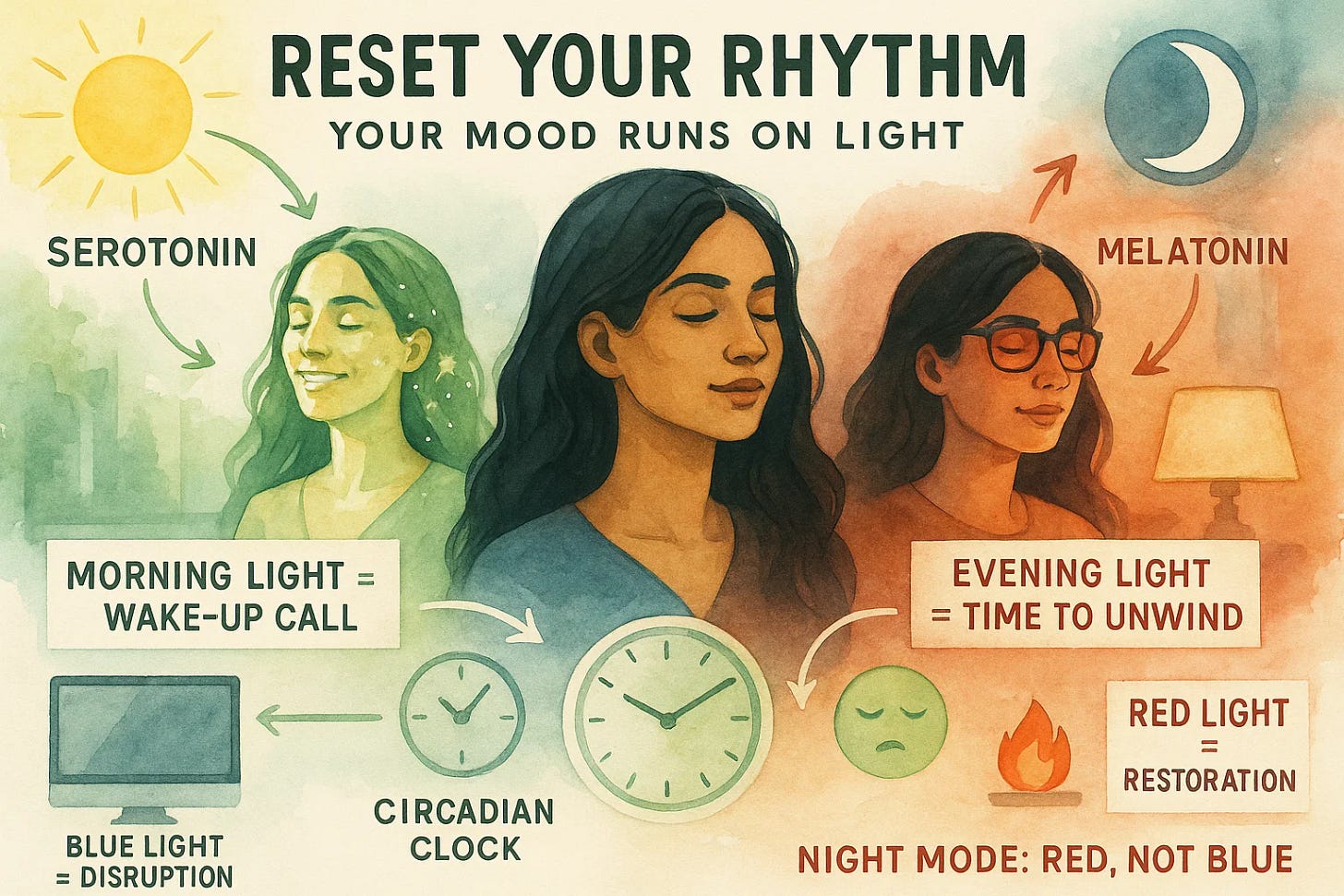Our bodies are deeply connected to the rhythms of natural light.
For most of human history, the sun was our primary light source, acting as a clock that told us when to wake, work, and rest.
Bright sunlight in the morning triggered alertness, while the soft, reddish glow of fire at night signaled it was time to wind down.
This natural cycle is the foundation of our circadian rhythms—24-hour internal clocks that regulate sleep, mood, digestion, and hormone production.
The Role of Light in Circadian Rhythms
1. Morning Sunlight = The Brain’s Wake-Up Call
• Exposure to bright, blue-enriched light in the morning boosts serotonin production, a neurotransmitter that improves mood, focus, and energy.
• Morning light also suppresses melatonin, the hormone that makes us feel sleepy, helping us feel alert and ready for the day.
2. Evening Light = Time to Unwind
• As the sun sets, natural light becomes warmer and redder. This signals the brain to start producing melatonin, preparing the body for sleep.
• Firelight, which humans relied on for thousands of years, mimics these reddish tones and has little effect on melatonin production.
The Modern Problem:
Today, we’re surrounded by artificial lighting that doesn’t follow these natural cues.
Bright, cool-toned lights from screens, LEDs, and fluorescents confuse our internal clocks, suppressing melatonin when we need it most.
• Delay Sleep: Blue light at night (from screens or cool-white LEDs) suppresses melatonin, delaying sleep onset and reducing its quality.
• Impact Hormonal Balance: Disrupted circadian rhythms affect the release of cortisol, insulin, and other hormones that regulate stress, appetite, and metabolism.
• Increase Health Risks: Long-term circadian disruption has been linked to issues like insomnia, depression, obesity, and even chronic illnesses like diabetes and cardiovascular disease.
Light isn’t just about visibility—it’s the master regulator of your biological clock.
How I’ve Set Up My Lighting for Sleep & Productivity
Once I understood the power of light, I completely changed my lighting setup:
Morning Light: I go outside first thing in the morning to reset my circadian clock.
Low-Flicker LEDs: No more cheap, flickering bulbs in my home.
Evening Glow: I use warm, dim lighting at night—yes, I’m that person who switches to red lights before bed. Instead of harsh overhead lighting, I rely on lamps with soft, indirect light that mimic the sun setting, helping my brain naturally wind down.
No Blue Light Before Bed: A few hours before sleep, I avoid devices that emit blue light or use blue light-restrictive programs like Iris or Night Shift. I swear by blue light-blocking glasses, especially if I need to be on my laptop late at night.
Blackout Curtains: No light pollution, only deep sleep.
And let me tell you—the difference is insane.
Why This Matters for You
If you feel fatigued, restless, or drained, your lighting could be part of the problem.
We’ve lost our connection to natural light rhythms, and it’s affecting our health in ways we’re only beginning to understand.
Want to learn how to reset your lighting for better sleep & focus?
Subscribe so you don’t miss my next post, where I’ll share:
The best light bulbs for sleep & focus
How to use red light at night to improve melatonin production
The simplest way to reset your circadian rhythm in the morning
Good lighting isn’t just a luxury; it’s an essential tool for living well.
Your mood, your energy, and even your sleep depend on it.
If you are interested in learning more about light, read my last post on light flicker
From Flicker to Fatigue: The Hidden Impact of Bad Lighting on Your Health
I live in London, and I can attest to the fact that grey skies and short winter days can mess with your mood–big time!








One of the things that made the biggest difference in my health! Excited to see some recommendations for best lamps xx